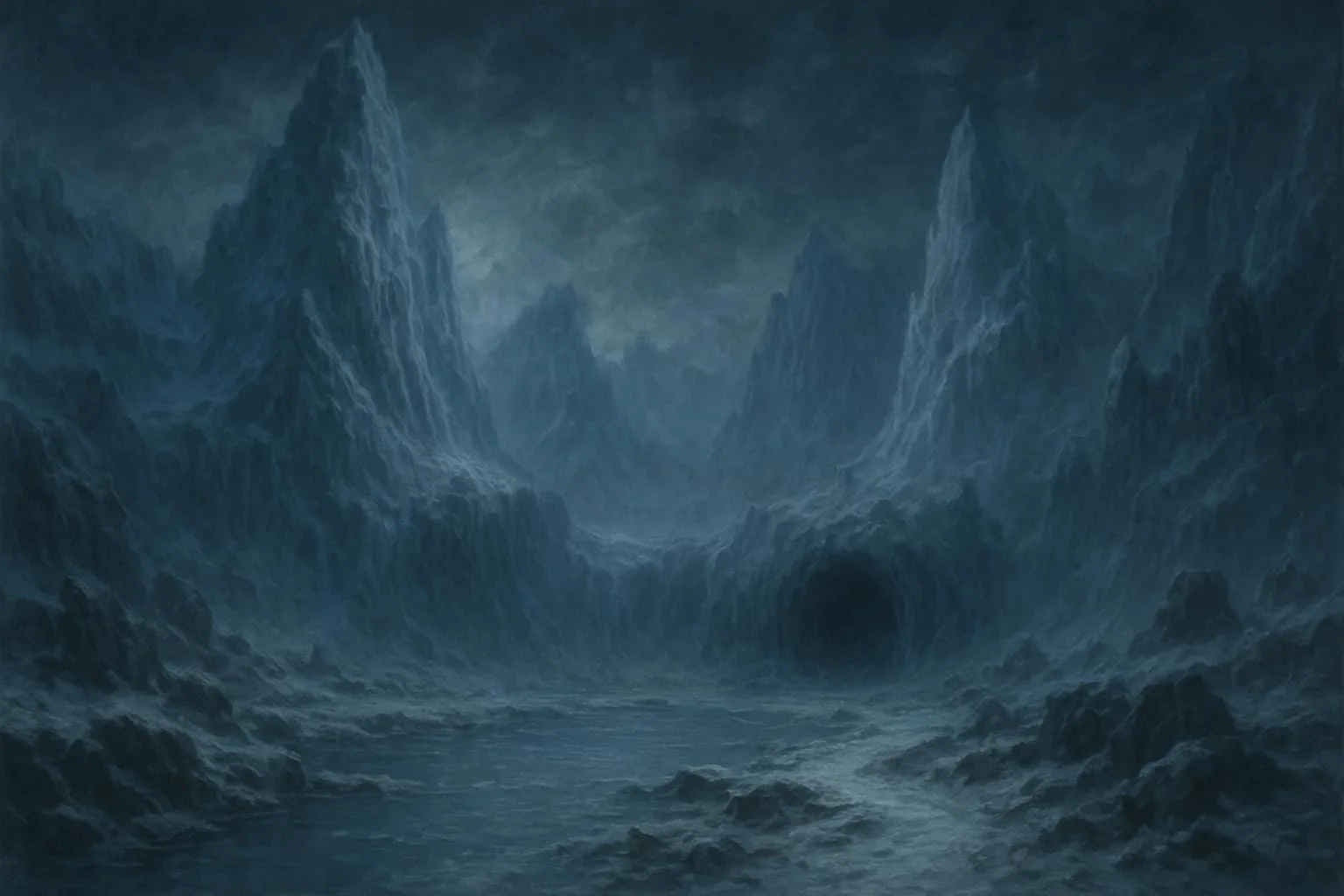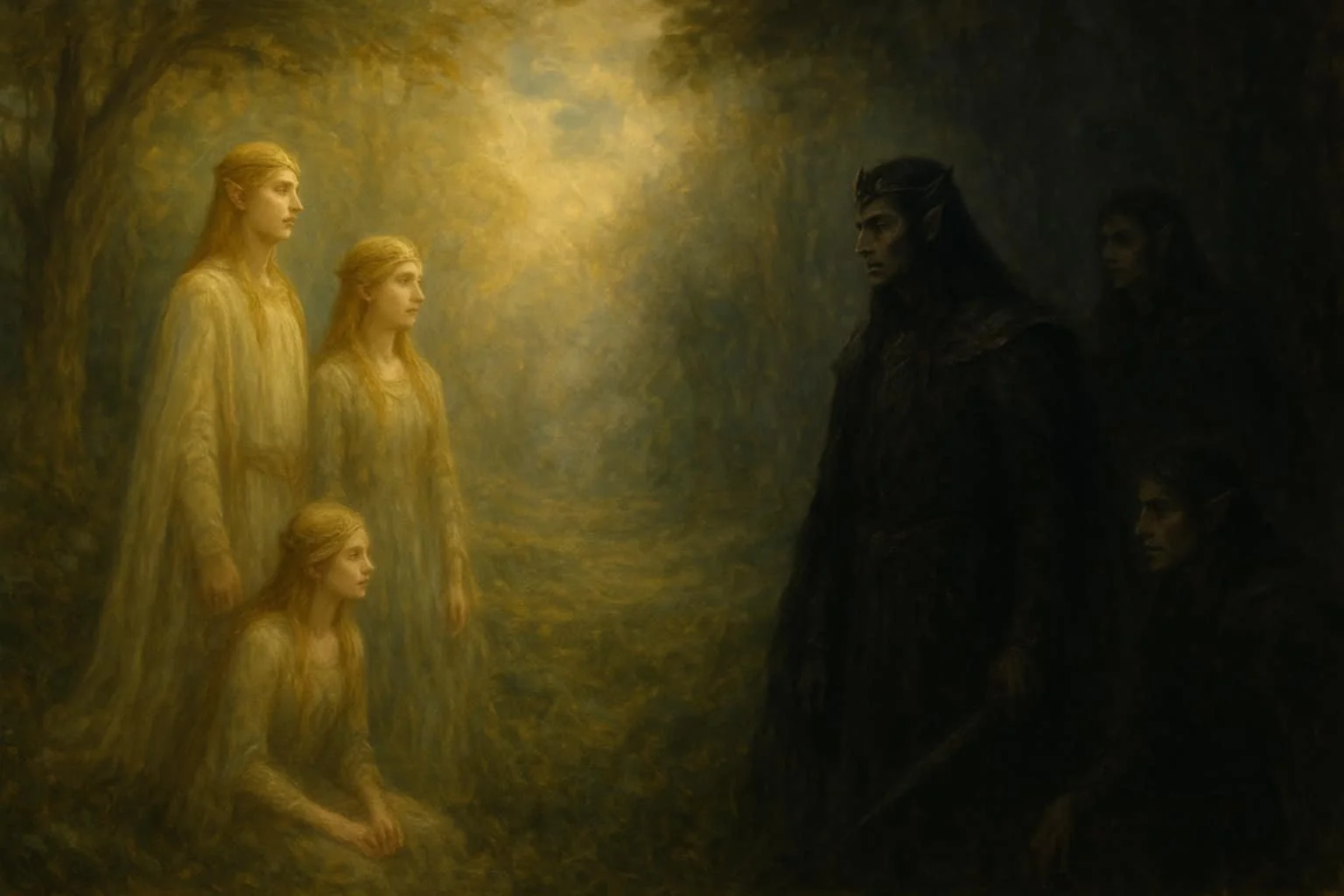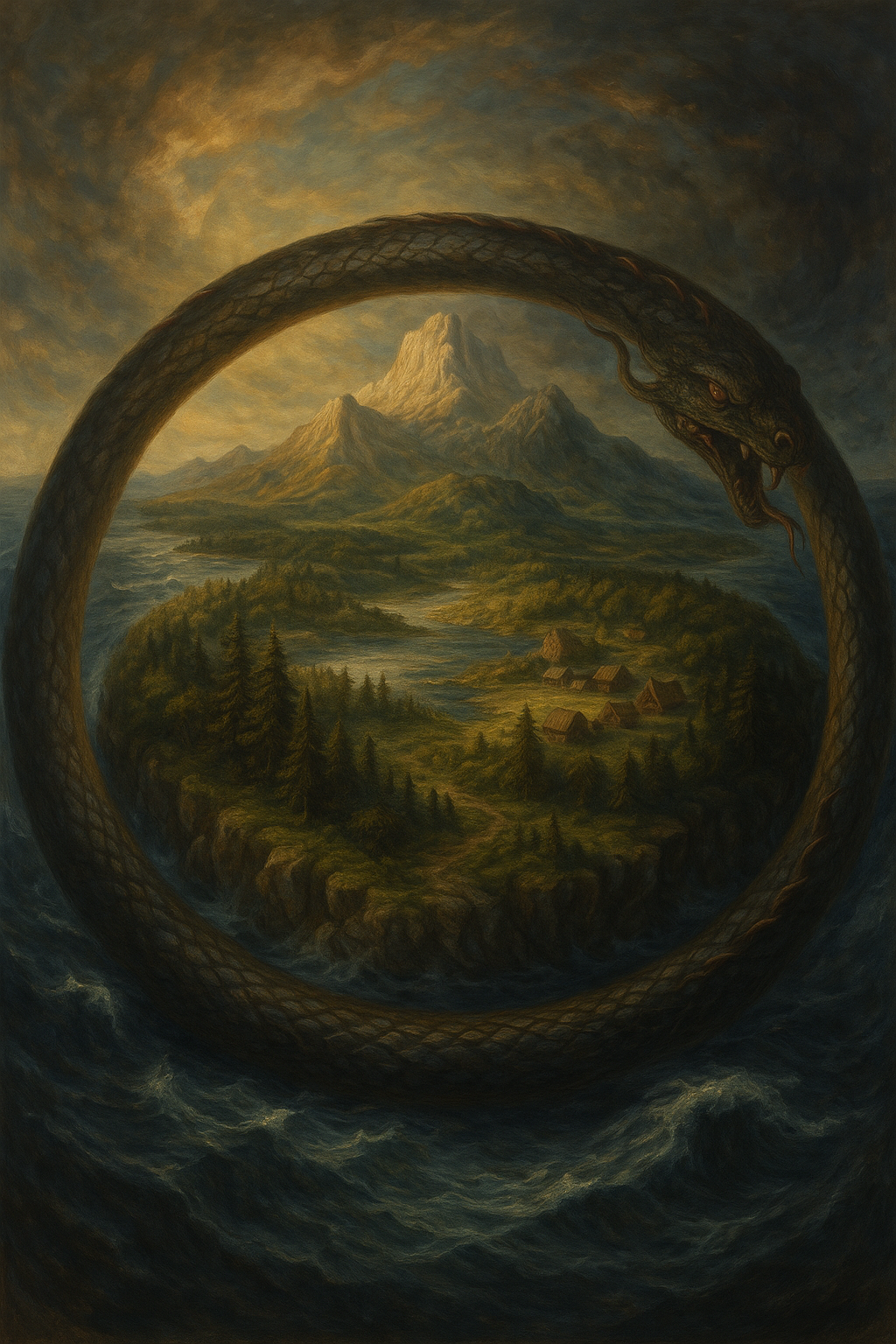
Asgard: Where Order Burns with Purpose
Above the storm and beneath the stars rises Asgard—a citadel of will where law is hammered from fire and purpose gleams like gold. Here dwell the Aesir: Odin’s hunger for wisdom, Thor’s steadfast strength, Frigg’s quiet foresight. Bifröst arcs like a burning vow between worlds, a bridge you cross by discipline, not desire. This is no idle heaven but the furnace of order, where every hall (Valhalla, Gladsheim, Bilskirnir) embodies a principle, and every oath bears weight. The myths name it a realm; the spirit remembers it as a practice. In an age of noise, Asgard is the art of attention—the choice to build meaning against the pull of entropy. Step onto the bridge. Bring your question. Pay the price. Let order burn with purpose.

Vanaheim: Realm of Fertility, Peace, and Renewal
Vanaheim is the most overlooked of the Nine Realms — a place not of war or fire, but of living earth, wild magic, and the quiet power that sustains all life. It is the home of the Vanir, gods of fertility, prosperity, seiðr, and sacred cycles. While Asgard thunders with battle and Jötunheim broods in ancient chaos, Vanaheim endures like a heartbeat beneath creation. It is the green realm of growth, harvest, and renewal — the pulse that keeps the worlds alive.
Here, magic is not forced; it flows. Rivers carry memory. Forests speak in roots and rings. Nothing dies without feeding life again. The Vanir teach a different law than the Aesir: that strength lies not in conquest, but in balance — in listening to the land, honouring the cycles of wyrd, and walking in right relationship with creation. To understand Vanaheim is to remember a truth often forgotten: that survival itself is sacred.

Helheim: Realm of the Dead
In the shadowed depths beneath the roots of Yggdrasil lies Helheim, the realm of the forgotten dead. It is not a place of torment, but of stillness - a hall of silence where those not chosen by gods or heroes find their rest.
Here, the goddess Hel, half living and half dead, keeps watch over countless souls who fade quietly from memory. There is no fire, no feast, no battle-song — only the whisper of what was.
To the Norse, Helheim was not a punishment but a truth. It reminded them that most lives end not in glory, but in quiet endurance — and that even in silence, every life still matters. In this cold, reflective realm lies a profound lesson: that the unremembered are not lost, and that death, like winter, is a pause before return.

Niflheim: Realm of Mist and Ice
Before there was fire, there was mist. Niflheim, the frozen world of Norse myth, lies at the edge of creation — a realm of silence, frost, and shadow where death and life intertwine. From its rivers came the first giants; beneath its mists dwell the forgotten dead. More than a land of endings, Niflheim is the cold patience that balances fire, the quiet breath between creation and destruction. To understand it is to understand the stillness that holds the cosmos together.

Svartálfheim: Realm of Shadow and Craft
Deep beneath the roots of Yggdrasil lies Svartálfheim — the shadowed realm of the dwarves, the black elves of Norse mythology. It is a place of fire and stone, where hammers strike, forges roar, and treasures of fate are born. From Thor’s mighty hammer Mjölnir to Odin’s spear Gungnir and Freyr’s ship Skíðblaðnir, the greatest gifts of the gods were crafted in these hidden halls. But Svartálfheim is more than a mythic workshop — it is a realm of paradox, where wisdom and greed, blessings and curses, creation and doom are forever entwined. This guide explores the lore, geography, myths, and archetypes of Svartálfheim, revealing the hidden fire that shaped gods and mortals alike.

The Shimmering Bridge Between Worlds: The Bifröst
In Norse mythology, the Bifröst was no simple rainbow. It was a trembling, fiery bridge of air, water, and flame — a cosmic pathway linking the world of humans to the gods of Asgard. Guarded by the ever-watchful Heimdall and destined to collapse at Ragnarök, the Bifröst symbolized both connection and fragility. More than myth, it reminds us today of the delicate bridges we walk in our own lives — bonds of trust, family, and community that shimmer with beauty but demand our care.

Alfheim in Norse Mythology: Light Elves, Freyr, and the Realm of Magic
Alfheim, the radiant realm of the light elves in Norse mythology, is a place of beauty, harmony, and inspiration. Rarely described in detail in the surviving texts, Alfheim remains one of the most mysterious of the Nine Realms—home to luminous elves, linked to the fertility god Freyr, and balanced against the shadowy world of the dark elves. Discover the light, shadow, and lessons hidden in this enchanted realm of Norse cosmology.

Muspelheim: The Realm of Fire, Destruction, and Renewal
Muspelheim, the blazing realm of fire in Norse mythology, is more than a mythic world—it is the force of creation and destruction itself. From Surtr and his fiery host to the legendary “sons of Muspell,” this realm embodies both the birth of the cosmos and its destined end at Ragnarök. To the Vikings, Muspelheim wasn’t just a story; it was reflected in the volcanic eruptions, wildfires, and raw extremes of their world. Discover how this realm of flame symbolizes balance, transformation, and the eternal cycles of life, death, and renewal.

Jötunheim: Realm of the Giants in Norse Mythology
In the vast cosmology of Norse mythology, Jotunheimr stands as the untamed frontier—a realm of primal forces, jagged mountains, icy rivers, and endless forests shrouded in shadow. Unlike the ordered splendour of Asgard or the human realm of Midgard, Jotunheimr is wild and unpredictable, embodying the raw power of nature itself. Home to the mighty Jötnar, the giants who are both adversaries and kin to the gods, this land represents chaos in eternal tension with divine order.
Exploring Jotunheimr is to journey into the heart of Norse myth, where legendary tales unfold—from Thor’s battles with frost giants to Loki’s schemes and Freyr’s fateful love for the giantess Gerðr. The realm is not merely a backdrop to these stories, but a living symbol of wilderness, otherness, and the eternal balance between chaos and cosmos.

Midgard: The Middle Realm of Norse Mythology
Midgard, the “middle realm” of Norse mythology, is the world of humankind — created from the body of the giant Ymir and encircled by the serpent Jormungandr. Positioned at the heart of Yggdrasil, the great World Tree, Midgard stands as both sanctuary and battlefield where gods, giants, and mortals meet. From the first humans, Ask and Embla, to Midgard’s fiery destruction at Ragnarok, its story reveals the Norse vision of life, death, and renewal.

Yggdrasil: The World Tree of Norse Mythology
Yggdrasil, the great World Tree of Norse mythology, stands at the center of the cosmos, linking gods, giants, humans, and the dead across the Nine Realms. Its vast branches reach the heavens while its roots drink from the wells of wisdom, fate, and creation. From Odin’s sacrifice for the runes to its trembling at Ragnarök, Yggdrasil embodies life, death, and rebirth in an endless cycle. For modern pagans and seekers, it remains a symbol of interconnectedness, resilience, and the eternal weave of wyrd.

